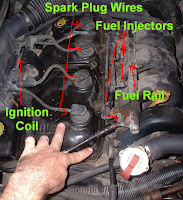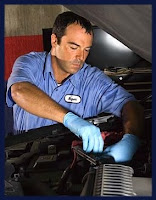All of us are aware of the common driving laws worldwide, but do not know all the common driving laws of our own regions. Very often, because of this, we land ourselves in trouble. So, friends, just for those you love driving, here is a brush upon on some driving laws and the penalty that is charged if we disobey these government laws. In the upcoming posts, we will cover the motoring laws of varied regions. Lets start with United Kingdom.
A Sneak Peak At the Common Driving Laws of UK Law Number 1 - Drunken Driving –
Law Number 1 - Drunken Driving – It has to be the most common driving law of any region. In UK, this driving law is stated under section 4(1) of Road Traffic Act 1988. According to this law, it is an offence to drive or even attempt to drive a mechanically propelled vehicle if the person is drunk or is under the affect of drugs.
Penalty – If you disobey this rule, you might have to pay a fine maximum of £5000 or imprisonment upto 6 months or might be disqualified for 1 year and endorsement unless "special reasons" exist. In case, you face this offence twice within 10 years, you might be disqualified for a minimum of three years unless "special reasons exist"
Law Number 2 - Drunk While You Are In Charge of a Vehicle – Under section 4(2) (as amended) of The Road Traffic Act 1988, it is considered an offence if you are drunk and are in charge of a mechanically propelled vehicle on road.
Penalty - Be ready to pay a fine upto £2500 or face imprisonment up to 3 months.
Law Number 3 – Intake of Alcohol Exceeding The Prescribed Limit – Try not to indulge in drink driving and specially do not drink excessively and drive. You might be caught under section 5 (1) of The Road Traffic Act 1988. According to this law, it is an offence to drive a motor vehicle on a road with alcohol over the prescribed limit.
Penalty – Its gonna cost you a lot. You might have to pay a fine up to £5000 or face upto 6 months of imprisonment. This offence can result in a minimum of 1 year disqualification unless "special reasons" exist. A re-test can be taken and the licence must be endorsed with points (3-11). Incase of a second similar offence within ten years duration, be ready to expect a ban of minimum 3 years.
Law Number 4 – Refusal to Give Specimen of Blood/ Urine/ Breath to  Police -
Police - I suggest never do this ever. The moral reason is that, incase you have made an offence, your refusal will moreover guarantee the offence and you might also trigger the anger of policemen. Well besides, the moral reason, the legal reason is that it is an offence under section 7(6) of The Road Traffic Act to refuse provide a specimen for analysis if you fail to give a reasonable excuse.
Penalty – If one tries to drive, then the penalty will be maximum fine of £5000 or imprisonment upto 6 months. You might face a ban of minimum 1 year unless "special reasons" exist. If a re-test is ordered & its a second offence with 10 years period, then in that case you are subject to a disqualification of 3 years.
Law Number 5 – Disqualified Yet Driving – Under the section 103 of The Road Traffic Act, it is against law to drive on a road if you are disqualified from holding or obtaining a driving licence.
Penalty – Fine that you might face is a maximum of £5000 or an imprisonment of 6 months. You might be subject to disqualification for any period or until a re-test is passed.
Law Number 6 – Refusal for Breathalyser – It is clearly defined in the Road Traffic Act 1988, section 6(4) that failure in providing a reasonable excuse, to provide a specimen of breath for a breath test is an offence. If you refuse to give your breath specimen when required to do so by a policeman in uniform.
Penalty – You are likely to pay a fine of £1000, 4 points & discretionary disqualification.
Law Number 7 – Careless Driving – The second most common driving offence worldwide. Against this offence, the driving law says under section 3 of The Road Traffic Act 1988 that its an offence to drive a mechanically propelled vehicle on a road or public place without due care and attention . Careless driving can include anything from loosing control on your
braking system to hitting other vehicle on road.
Penalty - The maximum fine you might anticipate is £2500 and 3-9 points. You may be subject to be disqualified until re-test passed.
These were 7 major driving laws of United Kingdom. Stay tuned for more such laws of other regions, the next could be your country. Till, then drive carefully and do not break any driving law. Happy Driving.
 advised that you should also keep away all kinds of electrical systems to avoid any damage to them as well as any harm to yourself.
advised that you should also keep away all kinds of electrical systems to avoid any damage to them as well as any harm to yourself.














































